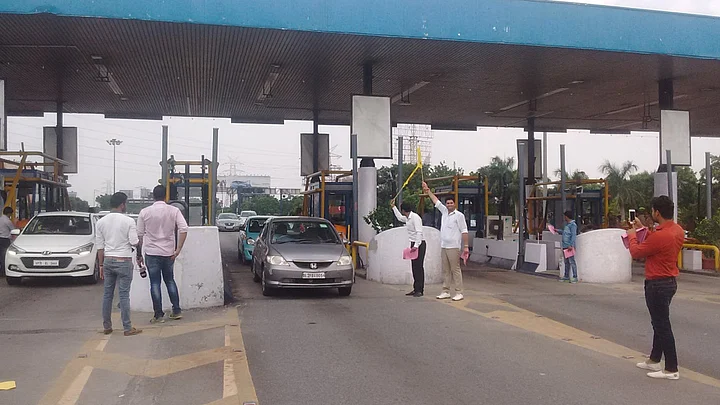The National Highways Authority of India (NHAI) was set up by an act of Parliament and is entrusted with the responsibility of development, maintenance and management of National Highways.
As of November 2016, there are 394 toll plazas on various National Highways across the country. As per the available data the government earned more than 6,700 crore rupees through toll fee in 2015-16.
User Fee at Toll Plazas
NHAI enters into Concession Agreements for design, construction, operation and maintenance of highways through Build, Operate and Transfer (BOT) model. The Concessionaire builds NH stretches and during operation and maintenance of the said stretch collects and retains the toll (user fee).
The operator shares a part of the toll revenue with the government. In case of stretches developed by government or NHAI Funds, NHAI engages Operate, Maintain and Transfer (OMT) Concessionaire/User-Fee Collection Contractors.
What Would Be the Impact of Demonetisation on Toll Collection?
Soon after demonetisation was announced, the Ministry of Road Transport & Highways (MoRTH) suspended the user fee collection on National Highways from 9 November 2016 to 2 December 2016.
For almost a month, the toll fee collection was suspended on national highways across the country. The government also informed the Lok Sabha that the average toll collection per day is Rs 51.59 crore from the toll plazas under the NHAI. Hence that amount did not accrue to the government during the suspension period.
From the data shared by the government in the Lok Sabha, it looks like the revenue collection at various toll plazas in 2016-17, developed with NHAI funds, may stay at 2015-16 levels with little or no increase.

The revenue collection at these toll plazas has seen a continuous rise every year with addition of new highways and greater traffic movement. From Rs 3,447 crore in 2013-14 to Rs 4,937 crore in 2015-16, the revenue collection increased by about 43 percent in three years.
In 2016-17, the revenue collection is at Rs 3,993 crore till December 2016. On the other hand, the revenue share from BOT projects has remained more or less constant at Rs 1,800 crore.
UP Accounted For More Than 20% of The Toll Collection
Uttar Pradesh consistently accounted for more than 20 percent of the total revenue collected at toll plazas. The revenues from UP crossed Rs 1,000 crore in 2015-16. Together, the five states of UP, Andhra Pradesh, Rajasthan, Tamil Nadu and West Bengal accounted for more than 60 percent of the total revenue collected in each of the past few years.

Between 2013-14 and 2015-16, revenue collection crossed Rs 100 crore in twelve different states. In 2016-17, the revenue crossed Rs 100 crore in 13 different states.
(This article has been published in an understanding with Factly.)
(At The Quint, we question everything. Play an active role in shaping our journalism by becoming a member today.)
